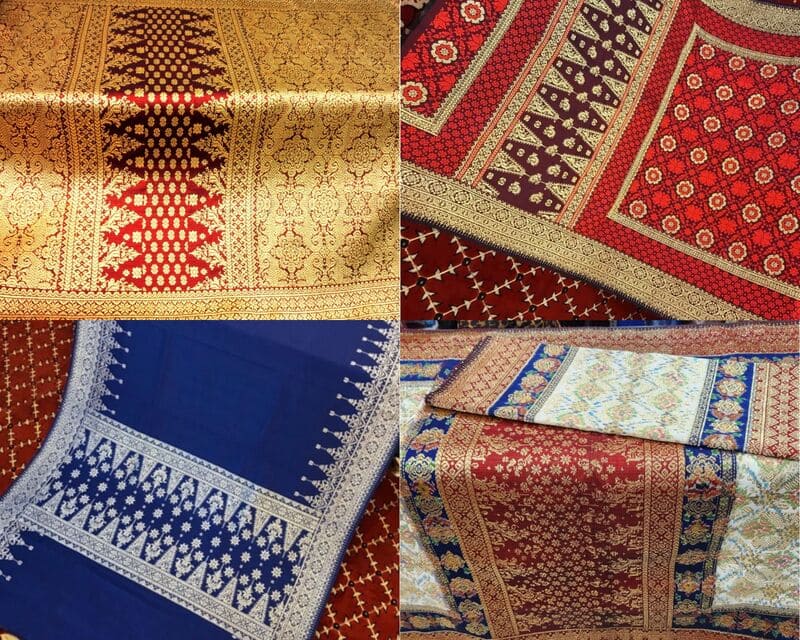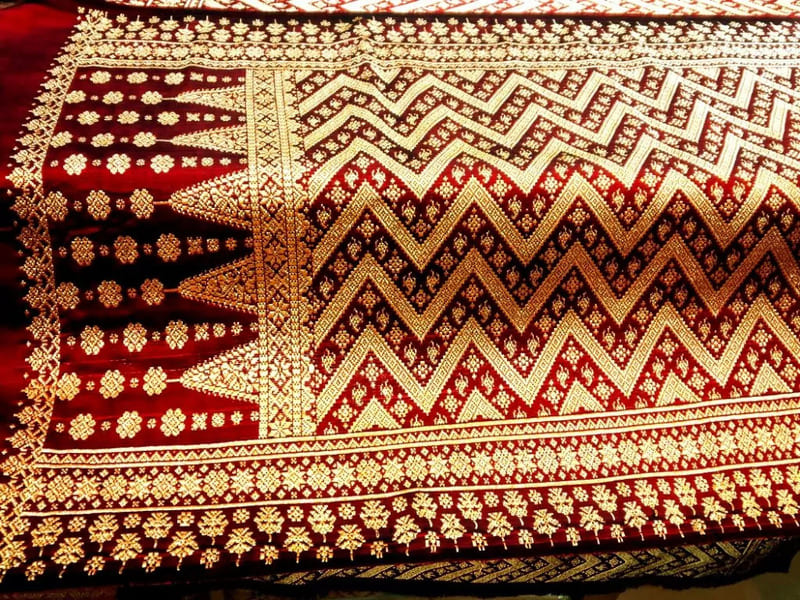As a person who has lived in Palembang for almost 23 years, I will bring you to explore more about “Songket”, an exclusive handwoven fabric.
Palembang, the oldest city in Indonesia, is renowned for enriching the archipelago’s distinctive cultural legacy, one of which is Songket. In 2013, Indonesia’s Ministry of Education and Culture officially recognised Songket Palembang as part of the nation’s intangible cultural heritage, specifically within traditional craftsmanship and expertise.
Songket is a type of handwoven textile which uses gold and silver threads to create the pattern. When you look at a Songket, you will be amazed by its shimmering appearance. In accordance with the variants, the woven patterns encompass exquisite flower and star patterns and culturally significant symbolic designs.
Songket Palembang is mostly known as “The Queen of Cloths”. Besides gold as its material, the exceptional aspect of this Songket lies in the fact that it requires a timeframe of one to three months for completion, in stark contrast to regular Songket, which can typically be finished in as little as three days. No wonder this textile is priced at millions of rupiah!
Now, let’s move on to the history of Songket. This textile is believed to come from the largest Buddhist kingdom in the archipelago in the 7th century, the Srivijaya Empire, whose Palembang was the capital. With its wide territory, Songket was spread and known around Sumatra island, Malaysia, Brunei, and Singapore. That’s why, today, we can see a lot of Songket variants, such as Songket Minangkabau in West Sumatra, and the Malaysian Songket.
Another historical record traces the origins of Songket back to the era of the Palembang Darussalam Sultanate during 1659-1823. Since that time, it has been a well-known fact that the indigenous people of Palembang frequently engage in the production of Songket.
There are also those who say that the origins of Songket began with Chinese traders who brought silk, and Indian and Middle Eastern traders brought gold to Palembang, resulting in the creation of gold-plated Songket.
Until today, Songket Palembang is commonly used for cultural traditions, such as traditional ceremonies, weddings, and festivals. In the traditional weddings of Palembang, Songket takes centre stage as an emblem of cultural significance and splendour. The bride and groom are often adorned in intricately woven Songket garments, which reflect the region’s rich heritage and royal traditions. The bride, in particular, wears a stunning “Songket Kain Kebaya”, a traditional Palembang wedding ensemble characterised by its opulent, gold or silver-threaded patterns. These exquisite fabrics not only add a touch of grandeur to the ceremony but also symbolise the family’s wealth and status. Songket in Palembang weddings serves as a tangible connection to the region’s history, and it beautifully encapsulates the union of two individuals, two families, and their shared commitment to preserving their cultural roots and traditions.
Based on the patterns, Songket is distinguished into six different types:
- Songket Lepus – The fabric is dominated by an abundance of woven gold thread
- Songket Tabur – The small sprinkle motif spread out looks like a flower or star
- Songket Bunga – The flower pattern is woven all over the fabric
- Songket Limar – The most colourful pattern
- Songket Tretes – The motif is only at the edge of the cloth so that the middle part remains empty
- Songket Rumpak – The pattern is similar to Songet Tretes, but the fabric has been made first based on a checkered motif.

Assessing the materials, production methods, and cost, Songket was once regarded as an opulent fabric reserved for the nobility, symbolising the wearer’s aristocratic status and dignity. However, the contemporary perception of Songket has evolved, as it is no longer the exclusive domain of the wealthy elite, with a diverse price range encompassing affordability to exclusivity. The introduction of synthetic gold thread has considerably lowered the overall cost, in contrast to the past when genuine gold was employed. Nevertheless, Songket of the highest quality retains its esteemed status as a magnificent art form and continues to command a premium price.
Finally, I am honoured to have had the opportunity to expose you to the magnificent world of Songket. This handmade cloth, dubbed “The Queen of Cloths,” has a special place in the heart of Palembang, a city steeped in history. Songket has been recognised as an intangible cultural asset of Indonesia, and it has not only adorned the people of Palembang in their most important life events, but it has also become a symbol of their cultural identity and a monument to the great artistry of its weavers.




